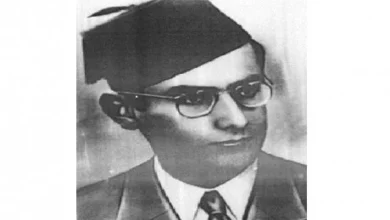A chronology of islamic Europe: Iberian peninsula and South – Western Europe
A brief introductory note
AL-ANDALUS (Spanish: Al-Andalus; Portuguese: Al-Andalus; Catalan: Al-Andalus), also known as Moorish Iberia, denotes the European Muslim state on the whole territory of the Iberian Peninsula, including present day Spain and Portugal as well as parts of southern France, northern Italy, and southern Switzerland which existed in varying size from 710 to 1492.
Altough the term „Al-Andalus“ as a state name suggests an integrated political whole, its synthetic character is related only to the spiritual and cultural unity manifested through Islam as a cohesive tissue and common denominator of a greather number of politically relatively or completely independent states. The fact that even these Islamic political units were never parts of a union or for that matter in good relations, as they even fought against each other, uncovers the true character of the first European Muslim states and the real nature of their relations with the neighbouring European Christian states. In the territory of Iberia Christians as well as Muslims have often fought amongst each other. It was not a rare thing to have the troops of a Muslim and Christian state unite against a third Islamic or Christian state. The example of the legendary hero El Cid who, altough he was a Christian knight still fought on the side of the Muslims against Christians for years, was not an exception. The relations between European Muslims and European Christians gained the outlines of multi-religious and iner-cultural conflicts only three centuries after the creation of the first European Islamic state. This was aided by the increasing struggle for territories and regional economic advantage wich both sides looked at with equal rights and appetites. By turning these local disputes into an international crusade the rulers of the Christian states from the Iberian Peninsula could count on the help from the rulers of Christian states from other parts of Europe, which is what happened several times after the calls made to the Pope to bless such a war from the Vatican in the name of all Catolics.
Even Muslim states were not spared from frequent and bitter intra-Islamic conflits. Many dynasties were successively created of which we shall mention only the most important ones. Their beginnig is marked by the creation of Umayyad Caliphate by Al-Walid (711-750); succeeded by the Emirate of Córdoba (750-929); which turned into Calihpate Córdoba (929-1031); this Caliphate disintegrated into a number of relatively or fully independent small taifa states, which is very changing frameworks became the territorial and cultural heirs to the Caliphate of Córdoba. During their period of existence, these Muslim states in the Iberian Peninsula represented communities of a high religious tolerance, cultural exchange, and active cooperation between Muslims, Christians, and Jews. During the Caliphate of Córdoba, Al-Andalus represented the centre of science and arts of all Europe, while the city of Córdoba represented an unprecedented civilisational set of the economic and cultural life of the Mediteranean and even of Europe at large.
In the subsequent period, the power over the territories of An-Andalus was taken over by Berber dynasties, first the Almoravids and then the Almohads. Fragmented into a number of smaller states, the biggest of which was the Emirate of Granada, these states fell under the control of Almoravids who initialy defended them from Christian attaks, especialy during the rule of Alphonso VI, and then they joined them to their territories. Such an uncertain, changing, and unpredictable situation had a negative effects for the hitherto high level of cultural and religious minorities and imposition of religious Puritanism and Extremism. This led to a more severe conflict between Islam and Christianity which started a struggle for predominance in Europe. The first political blow to the political and state tradition of the European Muslims in these new circumstanced was followed relatively quickly by the fall of the significant city of Toledo in 1085. The fall of the Caliphate of Córdoba in 1236 reduced that presence to the borders of the Emirate of Córdoba, the last European Muslim state in the Iberian Peninsula. Meanwhile, in 1249, the Portuguese Reconquista marked the end of the Muslim state presence in Portugal with the conquest of the city of Algarva. Finally, on January 2, 1492. that presence ended, and the political and state history of Muslims in this part of Europe was terminated with the handover of Granada from Boabdila, Emir Muhammed XII to the Castillian queen Isabella I and the Aragonian king Ferdinand II. However, this did not mean at all the end of a series of positive scientific, cultural, philosophical, social, as well as demographic influences caused by the presence of this first Islamic state in Europe and by the eight century long activity of the European Muslims, whose effects became an integral part of the European identity, thus remaining indelible part of it to this day.
The dramatic character of events and the complexity of mutual political, economical, and spiritual relations between the Islamic and Christian civilisations as European identities during these eight centuries can best be grasped by a relatively detailed chronology. A large number of colourful characters, dazzling feats of exceptional character, the chivalrous code of honour, and the history of war wiles, of great errors but significant truths, the benefit of petty points written in the records of some or others, and the enormous richness preserved in the unlearned lessons of tolerance and forgotten wisdoms of mutual respect, which are crucially important for the contemporary harmonious development of all three great religions and the future of Europe as their common continent – all of these can be seen in a chronological overview, written in the key of objectively well-known facts – sine ira et studio.
Izvor: Islamic identity of Europe
Autor: Ferid Muhić
Za Akos.ba pripremila: Fahreta Vreva




